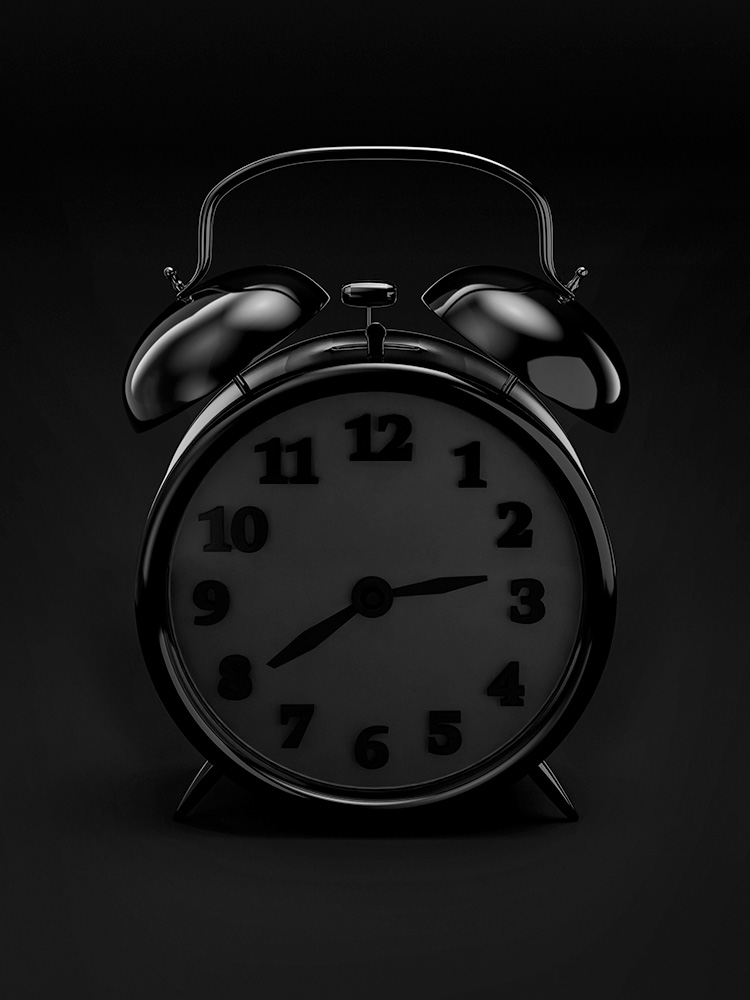Out of sync.
Interview: Yvonne Vahlensieck
Without natural transitions between day and night, our body’s internal clock becomes confused. Corrado Garbazza explains how this can affect our health and why daylight is sometimes the best medicine.
Corrado Garbazza, how did you sleep last night?
Very well, thank you. I normally sleep well. Although in summer, when it gets brighter earlier, I tend to wake up earlier, too. My schedule shifts later again in winter. That confirms the effect of light on our sleep-wake rhythm.
These days, many people have irregular sleep-wake rhythms. Why is that?
Before we had artificial light, people structured their days differently. They worked outdoors when it was light, and when it got dark, they went to sleep. One of the problems we have today is that we’re exposed to too much artificial light in the evening and at night. The other is that we’re exposed to too little sunlight during the day. Artificial light is much less intense than sunlight, and it’s always the same color. Moreover, natural light changes color over the course of the day—it’s bluer in the morning, which wakes us up, and redder in the evening.
What are the consequences of this disruption to the circadian rhythm?
In circadian medicine, the primary concern isn’t how much sleep we get, but rather when we do that sleeping. The classic example is shift workers, who work nights in artificial light and then sleep during the day. That runs completely contrary to our internal clock. Many studies demonstrate that this can lead to numerous diseases, including cancer. Light is the most important timekeeper for our body’s internal clock. And when the external light-dark cycle doesn’t correspond to our internal sleep-wake rhythm, we get out of sync, which can negatively impact our health.
You’ve also conducted studies on the sleep-wake cycle of people with depression. What is the connection there?
Many psychiatric disorders, including depression, go hand in hand with disruption to circadian rhythms. The trouble comes in determining whether this disruption is a cause of the illness or one of its symptoms. But it has been demonstrated that resynchronizing the sleep-wake rhythm with the natural light-dark cycle helps people with depression. On top of that, light has powerful antidepressant effects. This was shown, for example, in a large, multicenter trial on depression during and after pregnancy. Globally, around 14 percent of mothers suffer from depression—and this can negatively impact the child as well. Patients treated with bright light therapy felt better in just a few weeks, and their symptoms did not return.
How can you fix a broken circadian rhythm?
You can treat it without any medication, simply by getting more light during the day, especially in the early morning. In summer, that would ideally be daylight, and in winter, you can use special light therapy lamps. You can also supplement that approach by taking the natural hormone melatonin to help regulate the sleep-wake rhythm if your body is releasing melatonin too late in the evening. This kind of treatment can start to work in just a few weeks. We are currently conducting a study at the Basel University Psychiatric Clinics (UPK) to determine which kind of light is more effective in treating clinical depression—daylight or light therapy lamps.
You’re planning to launch a Circadian Health Clinic in Basel.
What kinds of services will it provide?
We’ll offer many services apart from the light therapy I mentioned before. For example, I’ll also consult with hospitals, just like we already do at the Centre for Chronobiology with various clinics at the University Hospital of Basel. After all, circadian rhythm disorders are common not only in psychiatric conditions, but in other medical conditions as well. And these disorders can be treated using chronotherapies. It’s also been proven that the effectiveness of some medications depends on whether patients take them in the morning or in the evening. Unfortunately, many hospitals are completely unaware of this new field of chronopharmacology. Our plan is to become a hub for all of Switzerland, because no other facility in the country offers this range of services.
Could the Circadian Health Clinic be active in areas other than hospital services?
Another key aspect we want to address is public health. Shift work could be better regulated, for example, by timing shifts to meet the needs of workers’ individual circadian rhythms or optimizing workplace lighting conditions. We already hold seminars on this subject for companies. Through our educational work, we aim to promote awareness of the issue, both at a public level and in the political arena. Take the field of elder care, for example. In care facilities, some residents are encouraged to go to bed in the afternoon when it’s still light outside. It’s no wonder that they can’t sleep at night. And teenagers have the opposite problem: They go to bed too late and are in poor shape at school the next morning. There are all kinds of structural problems in need of solutions.
More articles in this issue of UNI NOVA (November 2024).

